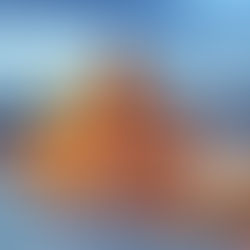By C. Perera, JadeTimes News

Fringed by the dhow harbour, where traditional wooden fishing boats shimmer in the heat haze, lies Al Mina, Abu Dhabi's waterfront district, linking the city's commercial and coastal histories. This district features residences, offices, marketplaces, and a collection of industrial warehouses repurposed as exhibition spaces and cultural hubs. Among them is the 421 art campus, which boasts a functional layout with courtyards filled with native vegetation, art galleries, co working spaces, a library, a café, and an outdoor plaza for film screenings, performances, and art installations.
Founded in 2015, 421 has become Abu Dhabi’s leading venue for showcasing regional art, design, and cutting edge culture. It supports artists globally, especially from the Global South, through partnerships and residency programs. Indian creatives, like curator Ritika Biswas with her project 'Nine Nodes of Non-Being' and the artist duo BaRiya, who participated in the Network Culture exhibition, have benefitted from 421's initiatives.
The current exhibition by Palestinian artist Mona Ayyash, "The Clock Doesn’t Care," is complemented by interactions with other international artists such as American sculptor Christopher Joshua Benton, Palestinian designer Jumaanah Alhashemi, and Lithuanian artist Auguste Nomeikaite. This highlights 421's role as a global hub where artists and visitors can share, experiment, and create art while engaging in cultural exchanges.
421’s head, Faisal Al Hassan, emphasizes their mission to nurture emerging artists and creative practitioners in the UAE and beyond, providing a supportive environment for arts-driven social inquiry and transformation. Many programs are organized in collaboration with local, regional, and international partners to enhance artistic and creative skills and support the UAE’s creative ecosystem.
Economists like Shankar Das highlight that a vibrant arts sector stimulates business activity, attracts tourism, and revitalizes areas struggling with poverty. Countries like Colombia, with its "Orange Economy" policy, illustrate how investing in the arts can be economically beneficial. The creative economy is projected to reach a global valuation of $985 billion by 2023 and constitute 10% of global GDP by 2030, according to G20 Insights.
Abu Dhabi is experiencing a cultural renaissance with numerous art galleries and collectives drawing international attention. Close to 421 is the Louvre Abu Dhabi, designed by Jean Nouvel, with its intricate architecture and impressive art collections. Excitement is also building around the upcoming Guggenheim Abu Dhabi by Frank Gehry, set to open next year on Saadiyat Island, housing works by both renowned and emerging artists.
Saadiyat Island also features the Abrahamic Family House, designed by David Adjaye, the Zayed National Museum, and other cultural institutions set to open next year. The Saadiyat Cultural District is emerging as a hub of museums, cultural institutions, and public programming, celebrating the UAE’s achievements and fostering global cultural exchanges. Manarat Al Saadiyat hosts the annual Abu Dhabi Art fair and various exhibitions, while NYUAD Art Gallery complements this vibrant scene with its exhibitions and public programs.
The UAE’s focus on art is part of a $12 billion program to transform the region into a global arts center, aligning with the UAE’s policy to position art and culture as key economic drivers. This transformation also reflects Abu Dhabi’s strengthened international presence in the arts scene and its challenge to the Western centric art paradigm.
Historically known for importing everything, the UAE now focuses on nurturing homegrown artists, building cultural infrastructure, and creating an inclusive cultural ecosystem. As Faisal Al Hassan of 421 notes, their journey from a gallery to a global community has been deeply fulfilling, serving as a template for the world to recognize art and culture as fundamental to a modern, progressive society.































Comments